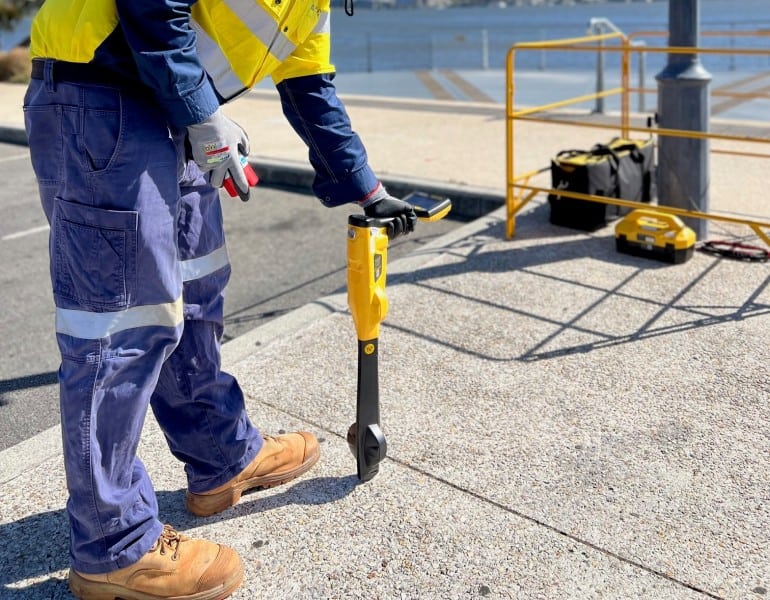
What Are Electromagnetic Locators?
Electromagnetic locators, often referred to as utility locators or cable locators, are specialised devices used in utility locating services to detect and locate underground lines and buried objects.
These advanced devices utilise electromagnetic induction technology to locate and trace buried utility lines, such as electrical cables, water pipes, gas lines, and telecommunication cables. This helps to prevent any accidental damage during construction, excavation, or maintenance activities.
Electromagnetic Induction
Electromagnetic locators operate on the principle of electromagnetic induction, similar to the concept of metal detectors. They detect the electromagnetic fields generated by buried utility lines when an electrical current flows through them. These fields are then picked up by the locator’s receiver.
Components
These devices consist of a transmitter and a receiver.
Transmitter: This unit is used to induce a detectable electromagnetic signal into the utility line or cable. It connects to the utility line via a direct connection or a clamp, and it can inject a specific frequency or signal into the line.
Receiver: The receiver is used to detect and pinpoint the electromagnetic signals emitted by the utility lines. Operators use the receiver to locate and trace the path of the buried lines accurately.
Frequency Selection
Electromagnetic locators often offer multiple frequency options to accommodate various types of utility lines, such as water pipes, gas lines, electric cables, and telecommunication wires. Different utilities may have different materials and conductive properties, which require different frequencies for optimal detection.
Signal Strength and Depth Estimation
The receiver provides information about the signal strength, which helps operators gauge their proximity to the utility line. Additionally, most locators can estimate the depth of the utility line based on the signal strength and other factors.
Visual and Audible Indicators
To assist operators in locating utilities, electromagnetic locators typically have visual and audible indicators. These indicators guide the operator to the precise location of the utility line. Common indicators include a graphical display, LEDs, and sound signals.
Signal Clarity and Filtering
Advanced electromagnetic locators often feature signal filtering capabilities, allowing operators to reduce interference from nearby utilities or metallic objects, thereby improving the accuracy of the detection.
Data Recording
Modern electromagnetic locators have data recording capabilities, allowing operators to store information about the location and depth of utilities for future reference or documentation purposes.
Training
Proper training is essential for using electromagnetic locators effectively. Operators need to understand how to select the appropriate frequency, interpret the signals, and use the locator’s features correctly to ensure accurate utility detection and location.
Safety
Safety is a paramount consideration when using electromagnetic locators, as they are often employed to locate potentially dangerous utility lines. Operators must follow safety guidelines and industry best practices to avoid accidents and damage to utilities.
Electromagnetic Locators
The primary purpose of electromagnetic locators is to prevent accidental damage to underground utilities during construction or excavation projects. By accurately identifying the precise location of these utilities, contractors can avoid costly disruptions, potential safety hazards, and service outages.
Moreover, electromagnetic locators are versatile tools that can be used in various industries such as construction, engineering, landscaping, telecommunications, and public works. They are essential for mapping out existing utility networks before new installations or repairs take place.
Other important tools include ground penetrating radar, radio frequency devices, acoustic listening devices, concrete scanning and vacuum excavation.
Back to FAQBack to FAQ